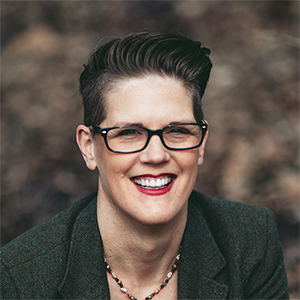Commentary: Housing is needed for domestic violence survivors
Published in Op Eds
Sarah stared at us — her knees shaking, hands trembling, eyes holding back tears — and asked: “Where do I go now?”
Sarah, whose real name I’ve withheld to protect her privacy, had just courageously left her abusive partner when she arrived at our center, the Nashville Office of Family Safety. But now, she found herself without a place to live or sleep.
This summer, I shadowed social workers and advocates at the Office of Family Safety as they worked with clients like Sarah. Beneath their stories of resilience lies an overlooked crisis — that many survivors of domestic violence face housing insecurity, and face obstacles to escaping their abusers as a result.
Domestic violence, also known as intimate partner violence, remains an often taboo topic. Yet it remains tragically common, and is considered a public health epidemic by the Centers for Disease Control and Prevention. Horrifically, three out of 10 women in the United States report being stalked, physically assaulted or raped by an intimate partner at some point in their lifetime.
Similarly, while survivors navigate the economic, physical and emotional consequences of abuse, many, like Sarah, must also grapple with the question of where they will live next. Domestic violence, studies show, is among the leading causes of housing instability for women and children nationwide. At least 80% of mothers experiencing homelessness also experienced domestic violence. In New York City, more families enter city shelters due to domestic violence than evictions. Too often, survivors face a difficult choice between being housed but unsafe, or safe but unhoused.
People fleeing abusive relationships need specific safety, support and care — which general housing shelters don’t always provide. By not offering trauma-informed support, shelters that take in domestic violence survivors can unintentionally compound their trauma.
As Sarah’s story shows, many survivors find themselves asking two questions: “Where can I live?” and “Is it safe?” Domestic violence shelters must address both of those questions, immediately providing survivors with a bed at an undisclosed location their abuser cannot find, while empowering them through safety planning and legal advocacy.
Policymakers should look to the Domestic Violence Housing First model, which seeks to empower survivors through implementing both short-term and long-term housing interventions centered on safety and trauma-informed care. One frequently cited example is Washington State’s Domestic Violence Housing First pilot program, funded over a five-year period by the Bill and Melinda Gates Foundation. Program results found that 96% of the families receiving assistance retained their housing at 18 months.
But, of course, shelters are only a temporary solution. The next step toward long-term safety and security is transitional housing, which provides a bridge between shelters and a permanent home. These programs typically don’t charge rent and prioritize intensive, multifaceted care, allowing survivors to establish self-sufficiency through employment support, legal assistance and group therapy.
This approach has a proven track record of success. Last year, 91% of survivors in transitional housing at Mary Parrish Center in Nashville secured permanent housing. Similarly, 96% of participants in Los Angeles’ new Survivor First pilot program remained safely housed after 18 months.
There remains a serious lack of funding for housing interventions. Many programs have long waitlists and are often forced to make difficult decisions about which traumatized person they are able to serve. Constant funding fluctuations threaten other initiatives. In fact, during my summer working with survivors, our limited funding capacity meant I could never guarantee our clients a safe place to stay.
That’s why policymakers must protect federal and state support for domestic violence housing, while also increasing funding and building coordination. Politicians have the opportunity to safeguard grants and pass policies to favor housing interventions that prioritize healing. They can leverage their unique position to coordinate between victim services and housing assistance systems, so survivors are not caught between the gaps.
I still think of Sarah, her shaking voice, asking, “Where do I go now?” The question resonates far beyond just my Nashville office. Policymakers must expand and build on Domestic Violence Housing First interventions, ensuring that survivors like Sarah can have the housing they need and deserve.
_____
Shyla Lensing is an undergraduate at Vanderbilt University studying social policy, law, history and economics. This column was produced for Progressive Perspectives, a project of The Progressive magazine, and distributed by Tribune News Service.
_____
©2025 Tribune Content Agency, LLC.
























































Comments